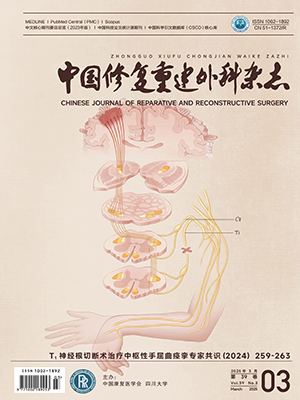Objective To observe the effect of pilose antler polypeptides(PAP)on the apoptosis of rabbit marrow mesenchymal stem cells (MSCs) differentiated into chondrogenic phenotype by interleukin 1β (IL-1β) so as to optimize the seeding cells in cartilage tissue engineering. Methods The MSCs were separated from the nucleated cells fraction of autologus bone marrow by density gradient centrifuge and cultured in vitro. The MSCs were induced into chondrogenic phenotype by transforming growth factor β1(TGF-β1) and basic fibroblast growth factor(bFGF). According to different medias, the MSCs were randomly divided into four groups: group A as black control group, group B(100 ng IL-1β),group C(10 μg/ml PAP+100 ng IL-1β) and group D(100 ng/ml TGF-β1 +100 ng IL-1β). The samples were harvested and observed by morphology, flow cytometry analysis, RT-PCR and ELISA at 24, 48 and 72 hours. Results The intranuclear chromatin agglutinated into lump and located under nulear membranes which changed into irregular shapeat 24 hours. The intranuclear chromatin agglutinated intensifily at 48 hours. Then the nucear fragments agglutinated into apoptosic corpuscles at 72 hours in group B. The structure change of cells in groups C and D was later than that in group B, and the number of cells changed shape was fewer than that in group B. The structure change of cells in group A was not significant. The apoptosic rate of cells, the mRNA expression of Caspase-3 and the enzymatic activity of Caspase-3 gradually increased in group B, and there were significant differences compared with groups A,C and D(P lt;0.01). Conclusion Caspase-3 is involved in aoptosis of the MSCs differentiated into chondrogenic phenotype cultured in vitro. PAP could prevent from or reverse apoptosis of these MSCs by decreasing the expression of Caspase-3 and inhibiting the activity of Caspase-3.
Citation: LIN Jianhua,XIU Zhongbiao,WU Zhaoyang,et al.. EFFECT OF PILOSE ANTLER POLYPEPTIDES ON THE APOPTOSIS OF RABBIT MARROW MESENCHYMAL STEM CELLS DIFFERENTIATED INTO CHONDROGENIC PHENOTYPE IN VITRO. Chinese Journal of Reparative and Reconstructive Surgery, 2006, 20(4): 427-430. doi: Copy
Copyright © the editorial department of Chinese Journal of Reparative and Reconstructive Surgery of West China Medical Publisher. All rights reserved




